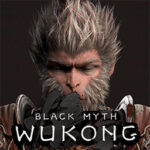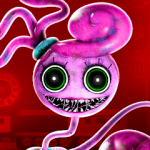Popular Now
How Psychological Horror Differs from Traditional Scares
Psychological horror focuses on fear that comes from within—the unknown, the uncomfortable, and the deeply unsettling.
In Poppy Playtime 4, the developers moved beyond the classic formula of surprise scares. Instead, they created lingering dread, mistrust of the environment, and anxiety from isolation, slowly breaking the player's mind over time.
The Environmental Design: Creating an Oppressive Atmosphere
One of the most brilliant moves in Poppy Playtime 4 is how the setting itself feels like an enemy.
The abandoned factory is darker, more twisted, and strangely organic. Hallways are intentionally too narrow, ceilings too low, and spaces eerily quiet. These elements make players feel trapped and watched, even when nothing is immediately there.
H3: Clever Use of Architecture
-
Overhead pipes creak unpredictably.
-
Lights flicker at just the wrong moment.
-
Corridors seem to “close in” as you move forward.
This manipulation of space feeds into a primal human fear—being unable to escape.
Sound Design: The Enemy You Can't See
Sound plays a massive role in Chapter 4’s psychological warfare. Instead of loud noises, players endure:
-
Whispers from behind walls
-
Footsteps that might not belong to you
-
Machinery that hums inconsistently
These sounds are often randomized, meaning no two playthroughs are identical. This prevents players from "learning" safety patterns and keeps anxiety levels high throughout the game.
H4: The Deadly Silence
Sometimes the game removes all sound entirely.
This is even worse than noise, leaving players alone with their racing thoughts.
Enemy Behavior: Intelligent and Unpredictable
Traditional horror games often have predictable enemy behavior. Poppy Playtime 4 flips this script. Enemies are:
-
Smarter: They listen for noise and respond dynamically.
-
Strategic: Some enemies pretend not to notice you—then strike when you relax.
-
Sadistic: A few toys toy with you emotionally, laughing or speaking cryptically before attacking.
H3: List of Notable Enemy Traits
-
Reactive AI that adjusts based on your last few actions.
-
Enemies that intentionally lead you into traps.
-
Fake “safe zones” that lure players into complacency.
Narrative Techniques: Trust No One
The storytelling in Poppy Playtime 4 uses unreliable narrators. Audio logs, visual cues, and environmental storytelling often contradict one another, making players second-guess everything.
At some points, players must make critical choices based on incomplete or misleading information, increasing psychological strain.
H4: Building Doubt
-
Allies may betray you.
-
Clear paths may lead to worse dangers.
-
“Rewards” often come with hidden traps.
This creates a narrative environment where paranoia is your only true ally.
The Role of Isolation: Loneliness as a Weapon
Isolation is used brutally in Chapter 4. Long stretches of gameplay force you to navigate the factory alone, with no other signs of life.
You start to crave even an enemy's appearance, just to break the crushing solitude. This psychological manipulation mirrors real-world studies of sensory deprivation and its harmful effects on the human mind.
H3: Effects of Prolonged Isolation (Real-World and In-Game)
-
Heightened anxiety
-
Paranoia
-
Visual and auditory hallucinations
By understanding this real-world psychology, MOB Games made the loneliness of Poppy Playtime 4 feel authentic and terrifying.
Hidden Timers and Pressure Systems
While many horror games use visible countdowns, Poppy Playtime 4 hides them.
Certain sequences activate hidden timers where players must complete tasks quickly without realizing they're being timed. When the timer ends, an enemy may appear without warning. This creates a constant, subconscious pressure to move faster—even when you don’t consciously know why you feel rushed.
H4: Invisible Countdown Effects
-
Induces panic in puzzle sections.
-
Forces mistakes due to stress.
-
Encourages reckless exploration, often leading to traps.
This technique weaponizes time itself against the player.
Visual Tricks: Distorting Reality
The developers also use subtle visual distortions:
-
Slight room rotations when you’re scared.
-
Shadows moving where there are no light sources.
-
Hallways that seem to stretch or shrink.
H3: List of Visual Psychological Tactics
-
Parallax illusions that make walls "breathe"
-
Object permanence tricks where items vanish and reappear
-
Forced perspective puzzles that disorient your sense of direction
By distorting reality in small, almost imperceptible ways, the game keeps your brain working overtime to understand what’s real.
How Players Physically React: The Game’s Impact
Many players report experiencing real-world symptoms while playing Poppy Playtime 4, including:
-
Sweaty palms
-
Racing heartbeat
-
Eye fatigue from over-focusing
This shows that the psychological horror design works not just emotionally, but physically, affecting players on a deeper level than traditional horror games.
H3: Physical Reactions List
-
Tunnel vision during intense scenes
-
Adrenaline spikes
-
Muscle tension after long play sessions
Chapter 4 doesn't just scare you—it physically stresses your body.
Conclusion: The Genius Behind the Fear
Poppy Playtime 4 is not about simple scares—it’s a masterclass in psychological manipulation. Through clever environmental design, unpredictable enemy behavior, mind-warping audio, and reality-bending visuals, MOB Games created a truly unsettling experience.
This chapter forces you to question every sound, shadow, and decision you make. It proves that the scariest monsters aren't always the ones you see—but the ones hiding inside your own mind.
















